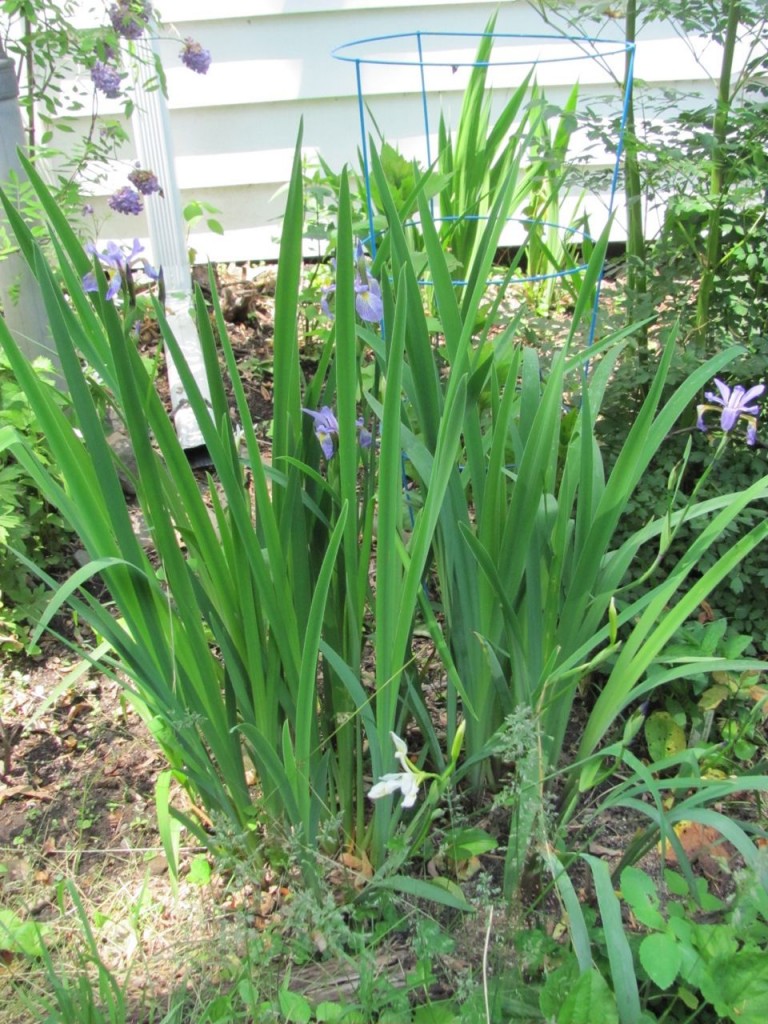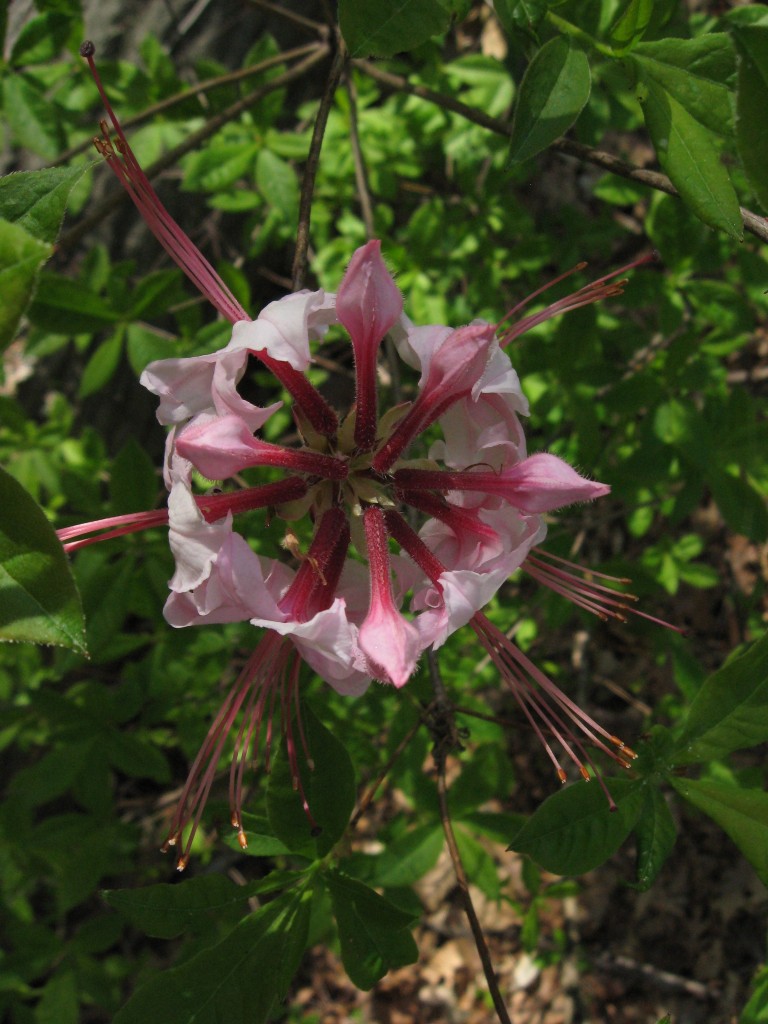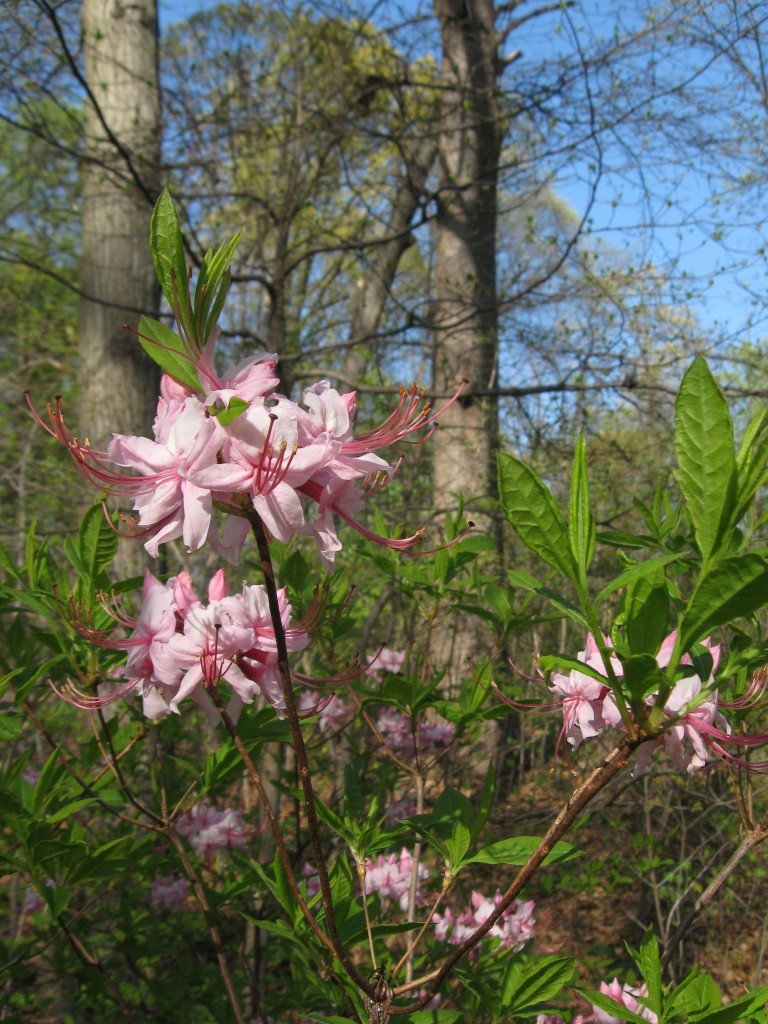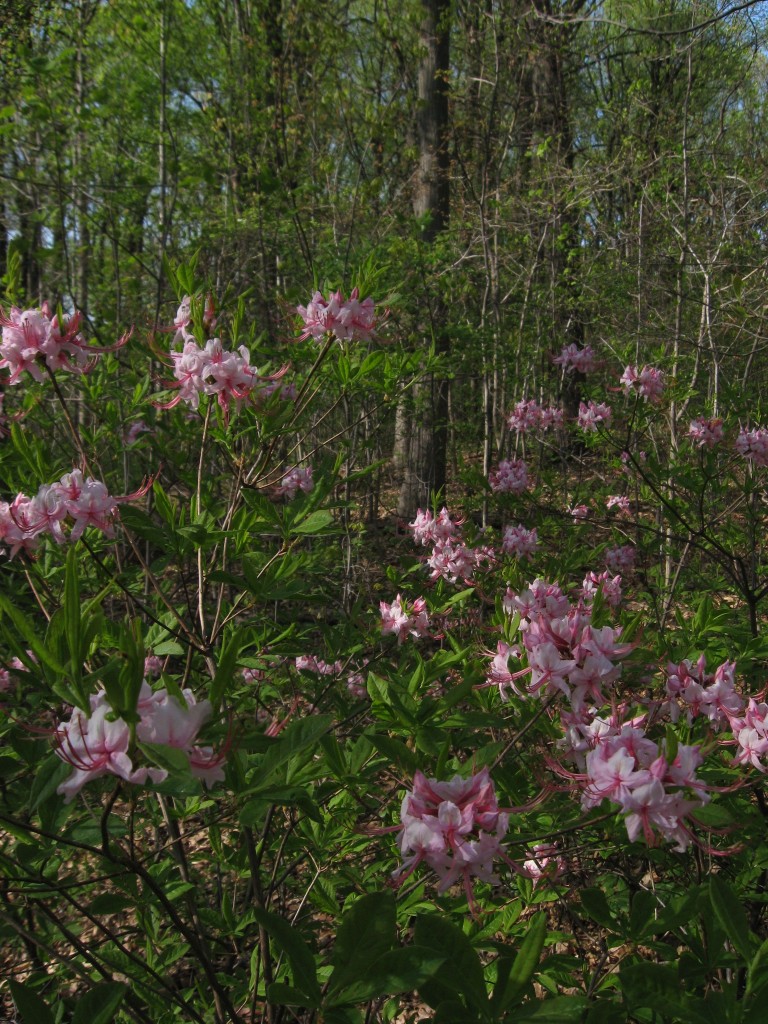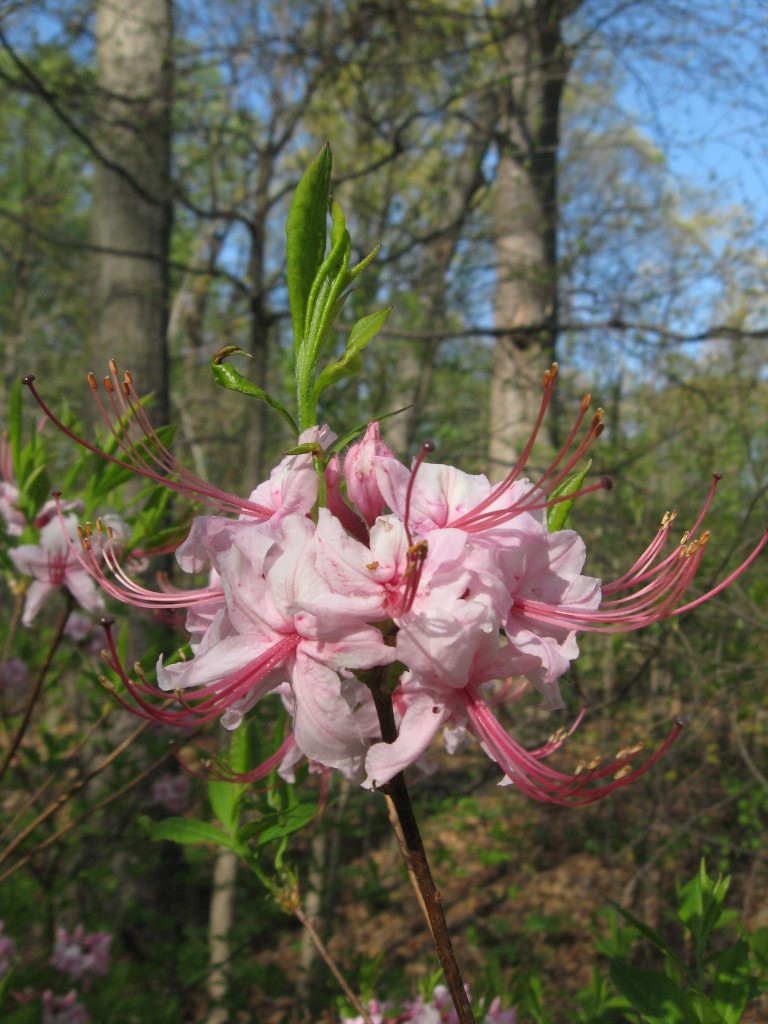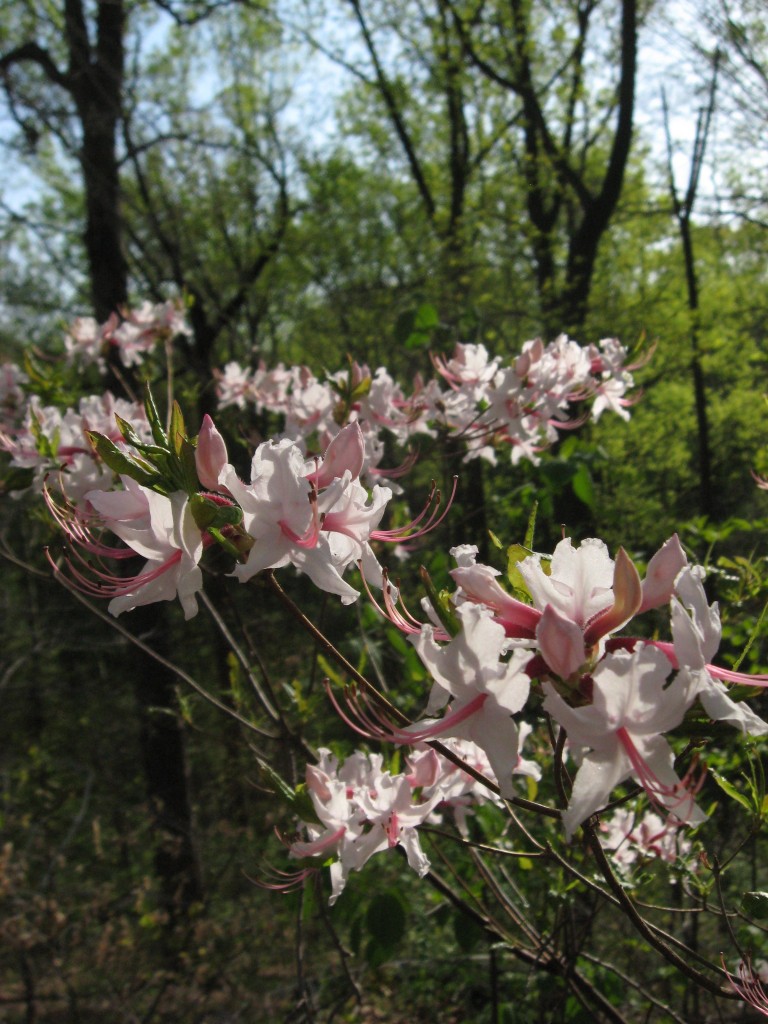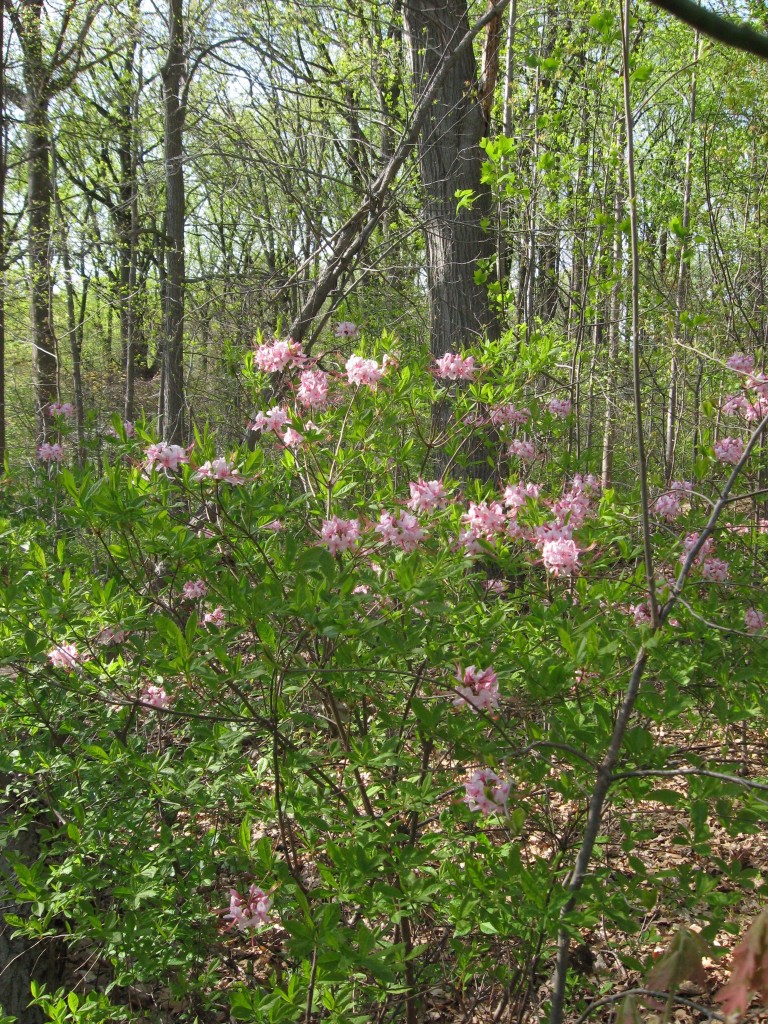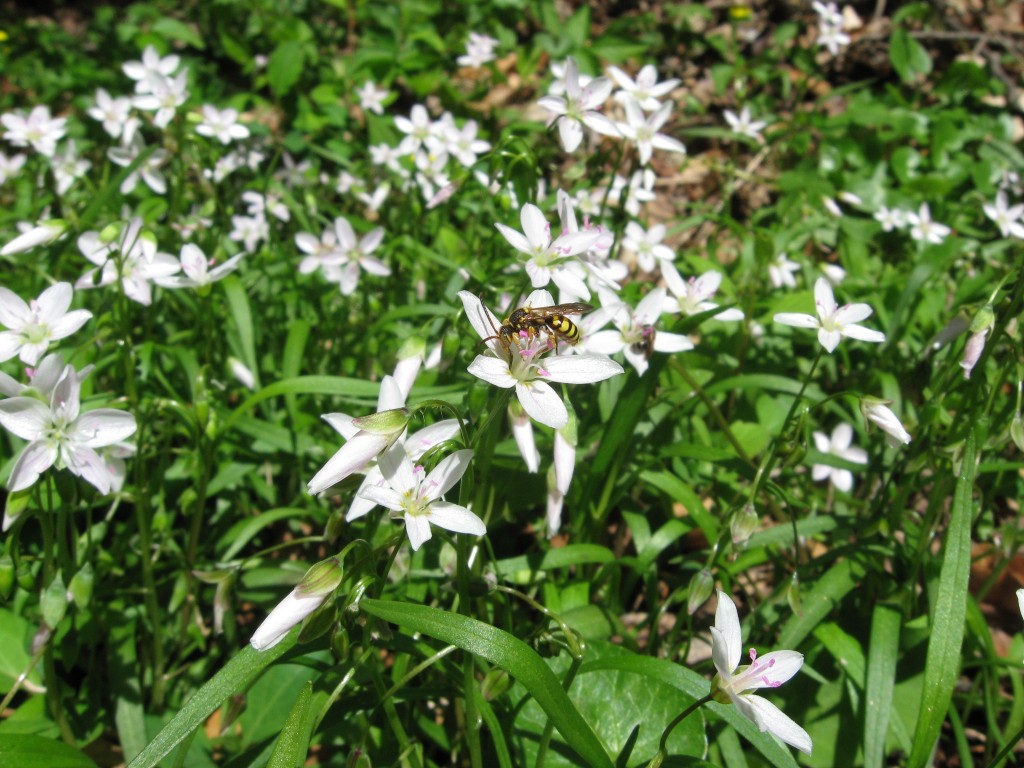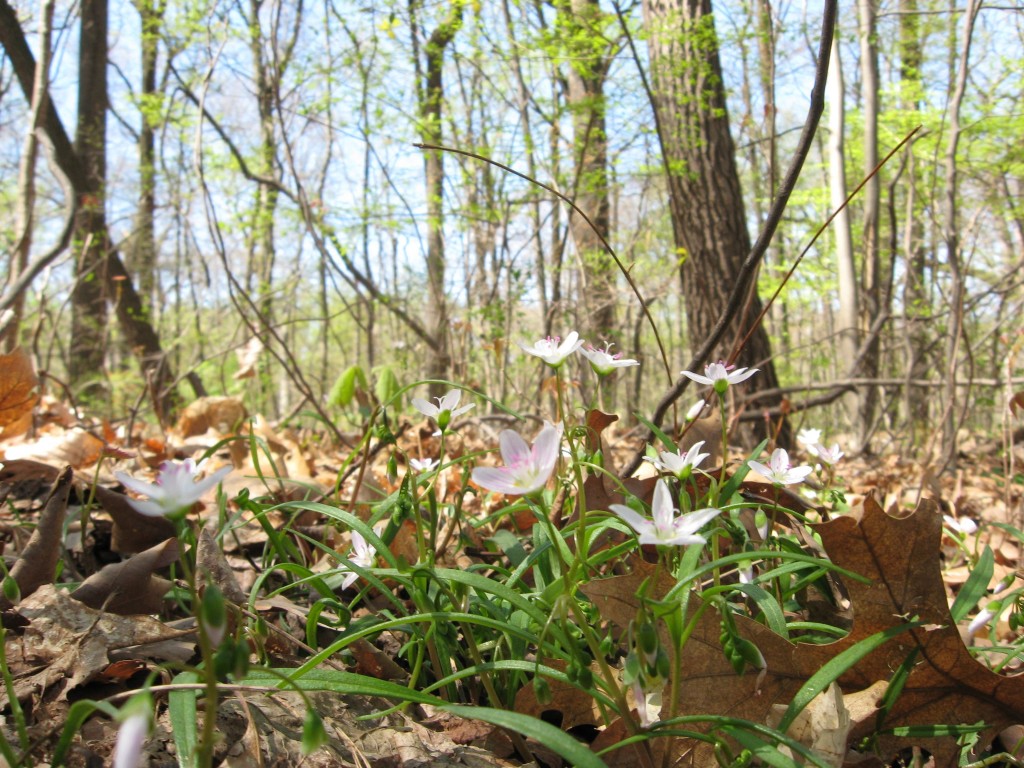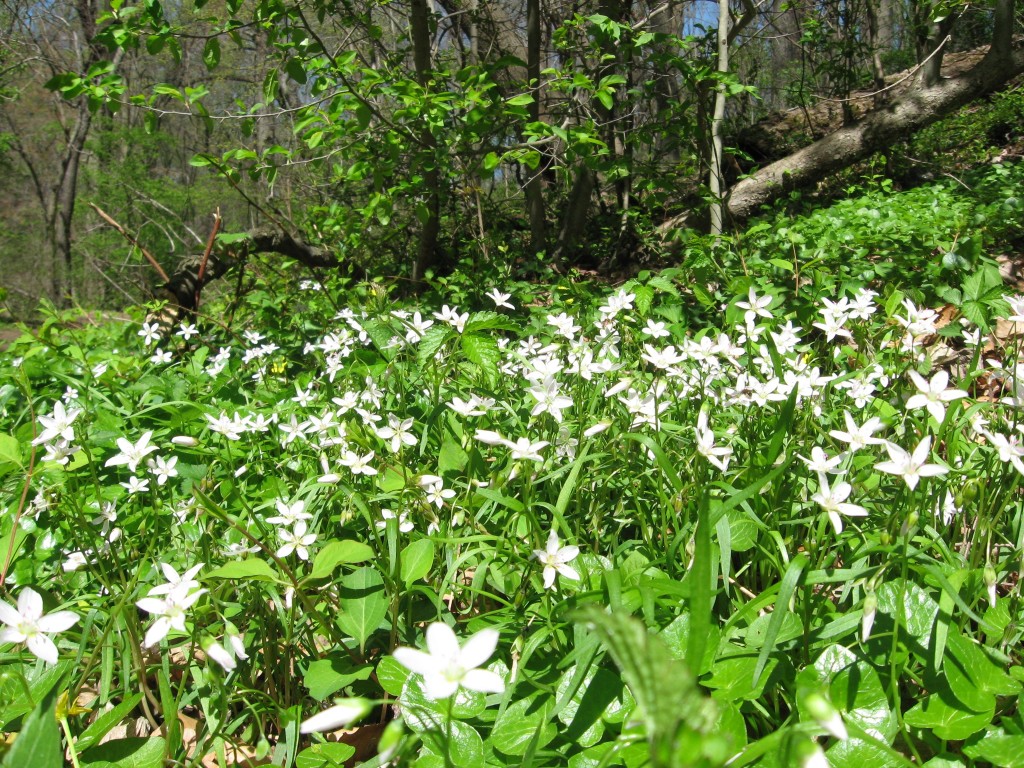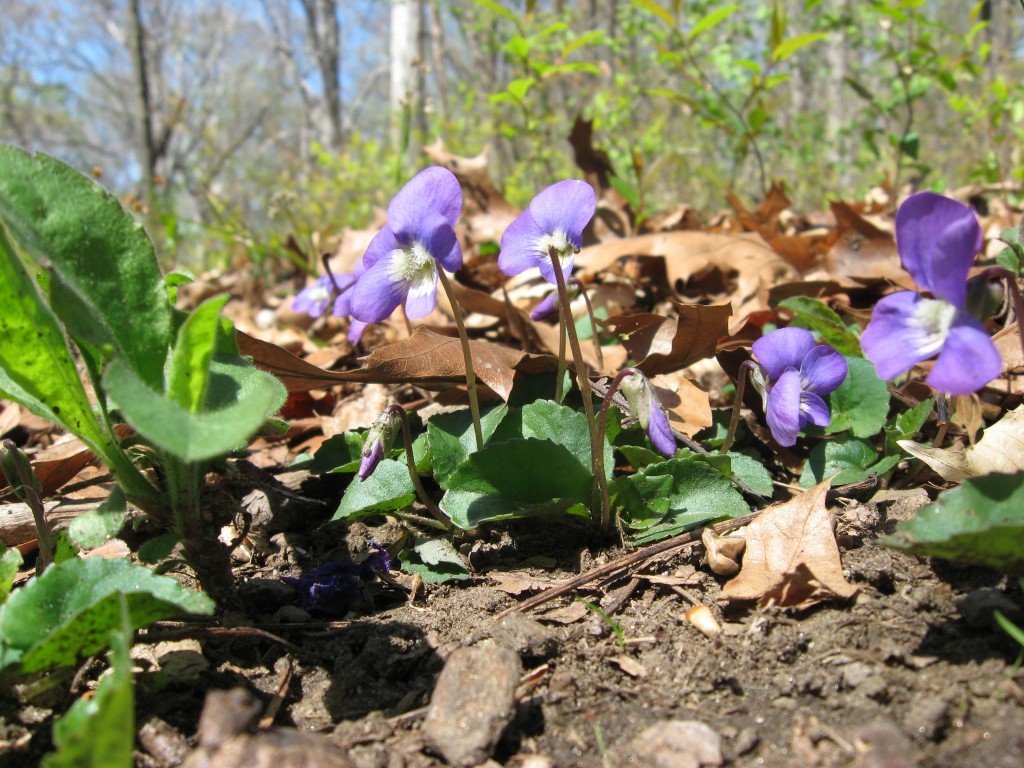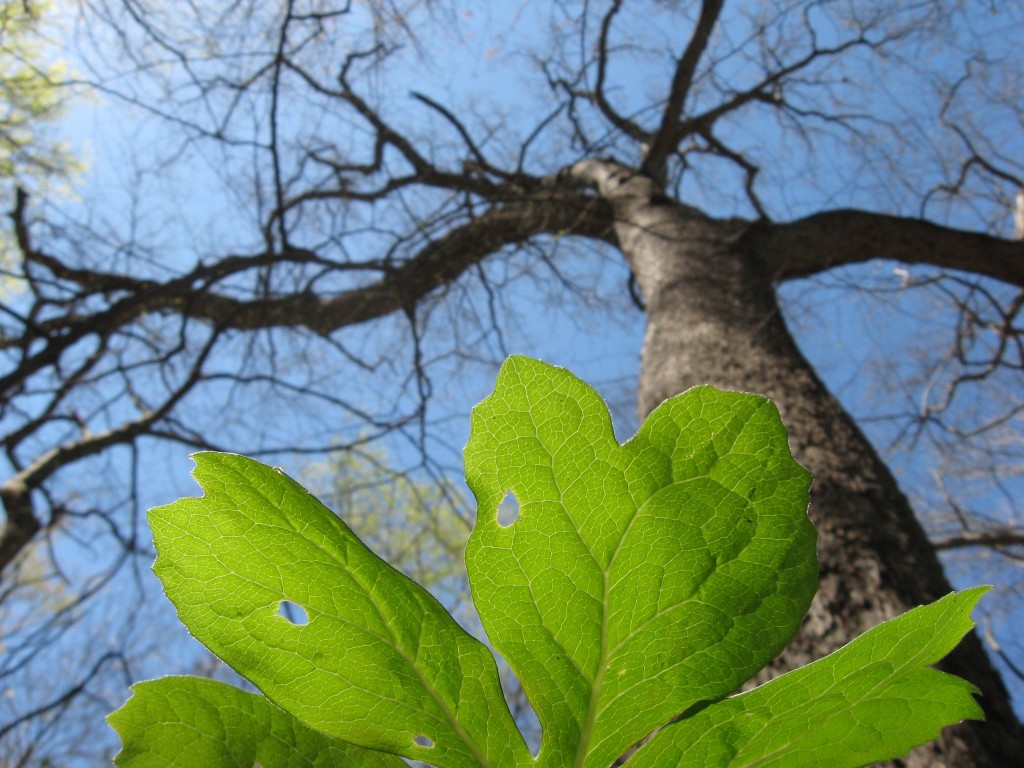Spring 2013 has reached its final hours as of this writing. It seems as if the transition from Spring into Summer gets lost in the lush green world.  The violent storms that rage across the Midwest, and grass and trees growing with the utmost vigor are all the  makings of a late spring. This season of Spring offers such a wide variety of weather conditions, colors and skies that it leads to confusion about it still being winter or all of a sudden summertime. This one season most notably has no on-off switch. It can be totally winter on its early days and totally summer in its later days, but this season is still Spring and we would be cheating ourselves out of that Spring feeling if we fail to get it into perspective through it all.
After the Equinox of late June, is when Spring officially ends, and on both sides of this moment are the transitional signs.
Spring is over when the Mayapples flop over leaving their ripe fruit on the ground to be consumed by Box Turtles. Spring is over when the last degree of bright green freshness in the leaves of trees is turned over into a deeper green maturity…The fruits of Jack-in-The Pulpit begin to mature into bright red clusters….. The last flowers of the Columbine finally wither away…. Â The last of the Bloodroot seeds has been dispersed by the ants, and some of the leaves begin to show signs of age, some with holes and yellowed edges.
The  invasive Garlic Mustard begins to turn purple and the seedpods harden and become brittle.
Spring being over has so many signs, surely everyone can think of something that changes, often a plant in the yard, or an insect or bird sighting. In this period, knowing that Spring is over for you becomes your own personal ending and the beginning of the transition into Summer.
For us it was the flopped-over, yellowed Mayapples in the Core forests of Morris Park that signaled the end of Spring, ones we saw as we busied ourselves trying to pull out and bag as much Garlic Mustard as possible, before it is too late. (When the seeds mature, they ‘pop’ out and spread if we touch the plant, making this invasive problem worsen)
For you, dear readers, please let us know what your End-Of-Spring moment is!
And now, please do ooh and awe at the bountiful plants and flowers in our Spring Garden! Here they are:
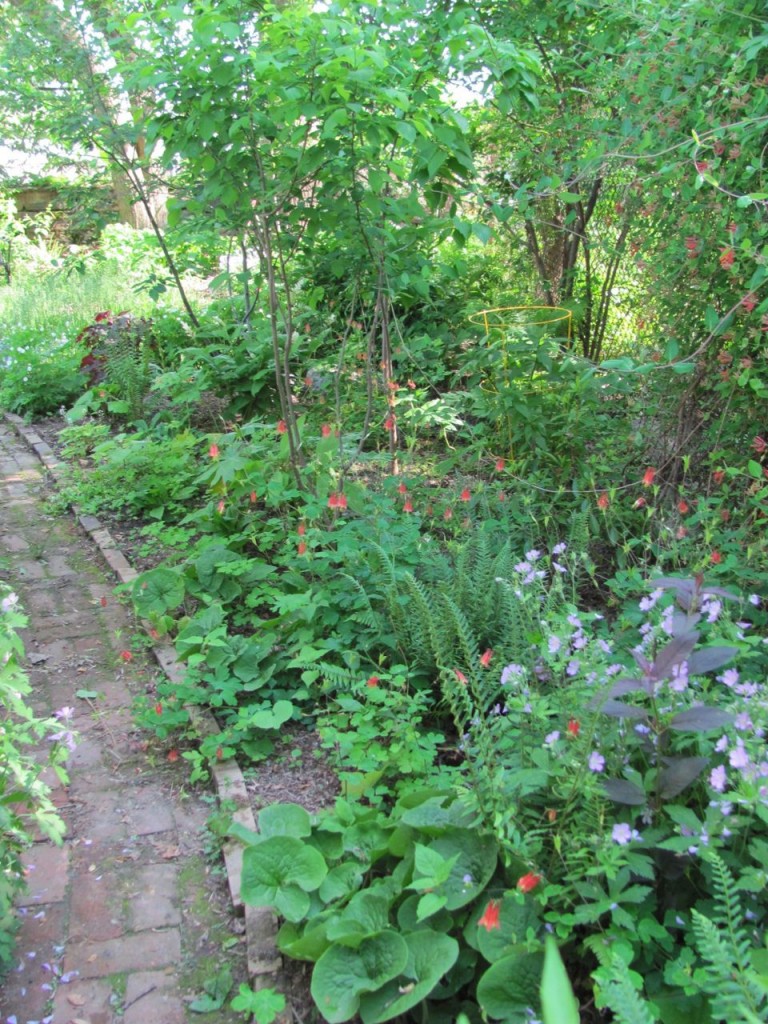
This mid to late Spring scene in our garden, pictured above is blooming Columbine, Coral Honeysuckle and Wild Geranium with Christmas fern and Wild Ginger.
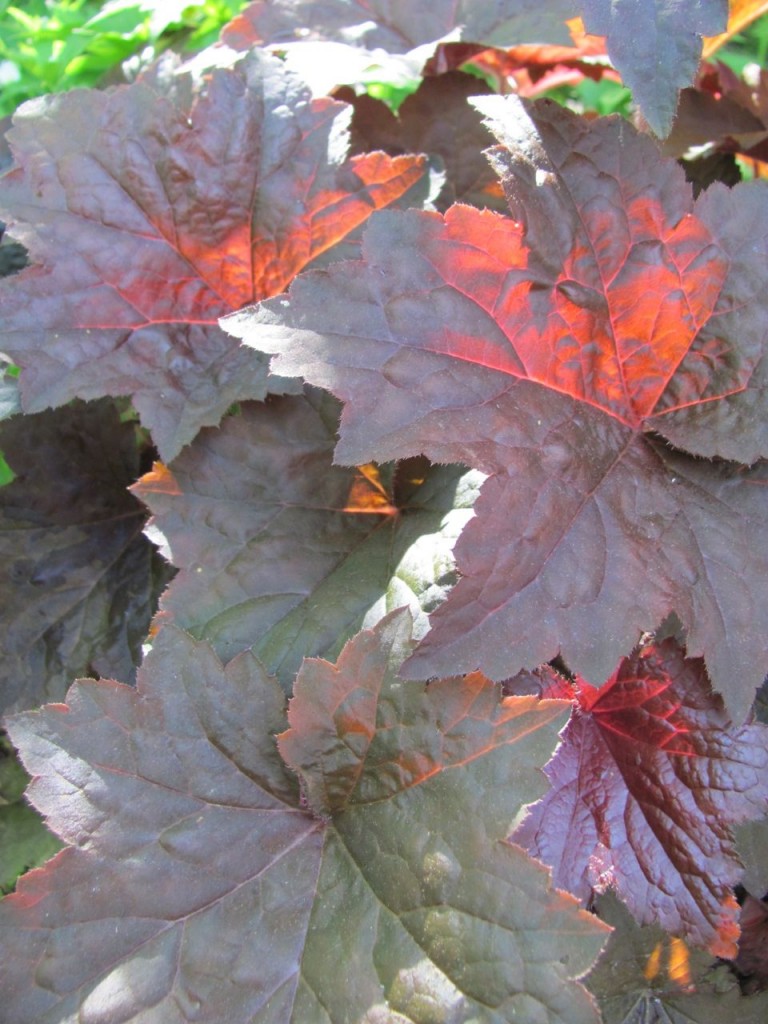
Above, the Heuchera americana has beautiful red leaves and creates a nice contrast to the very green backdrop.
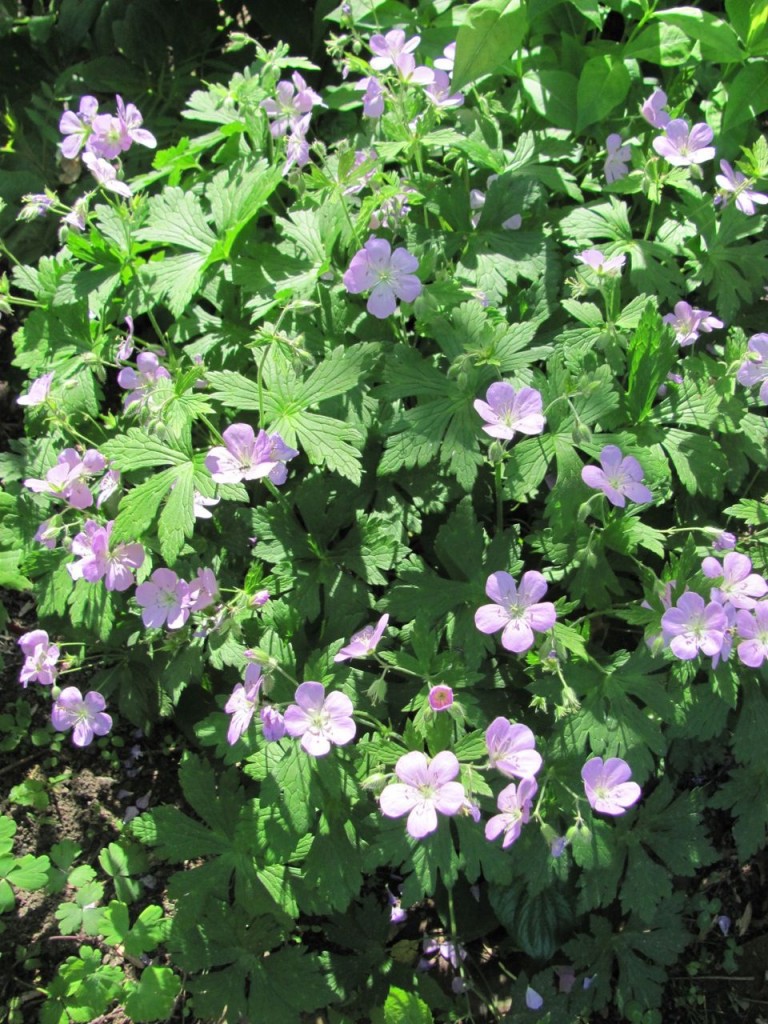
This Wild Geranium (Geranium maculatum) is a favorite Mid to Late Spring garden plant. Enjoy these amazing purple blooms. This specific plant is just growing on its own, having reseeded itself naturally, being that it grows naturally in the adjacent Morris Park. The specimens in Morris Park almost never bloom or go to seed because of excessive deer browsing. The seeds from this plant are saved and dispersed into the park in an effort to maintain the local population of this species and stave off extirpation, which is the extinction of a local population.
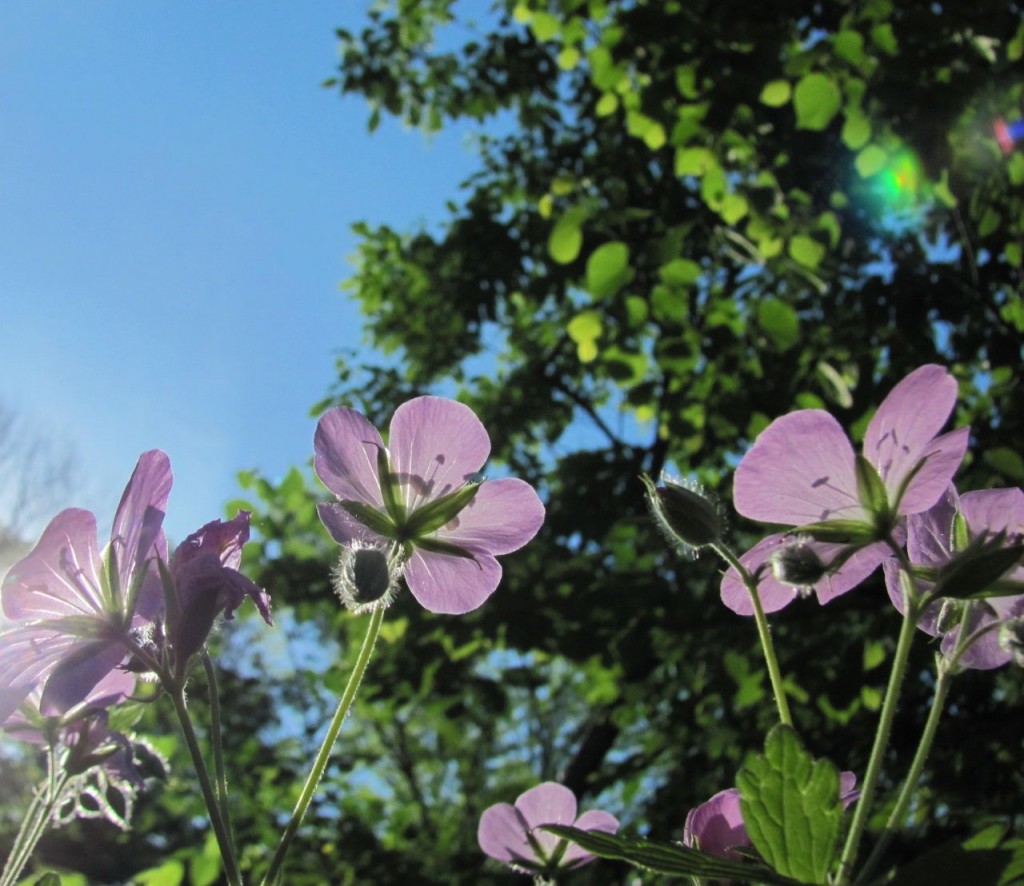
Above, the Wild Geranium blooming away in that distinctive Spring sun.
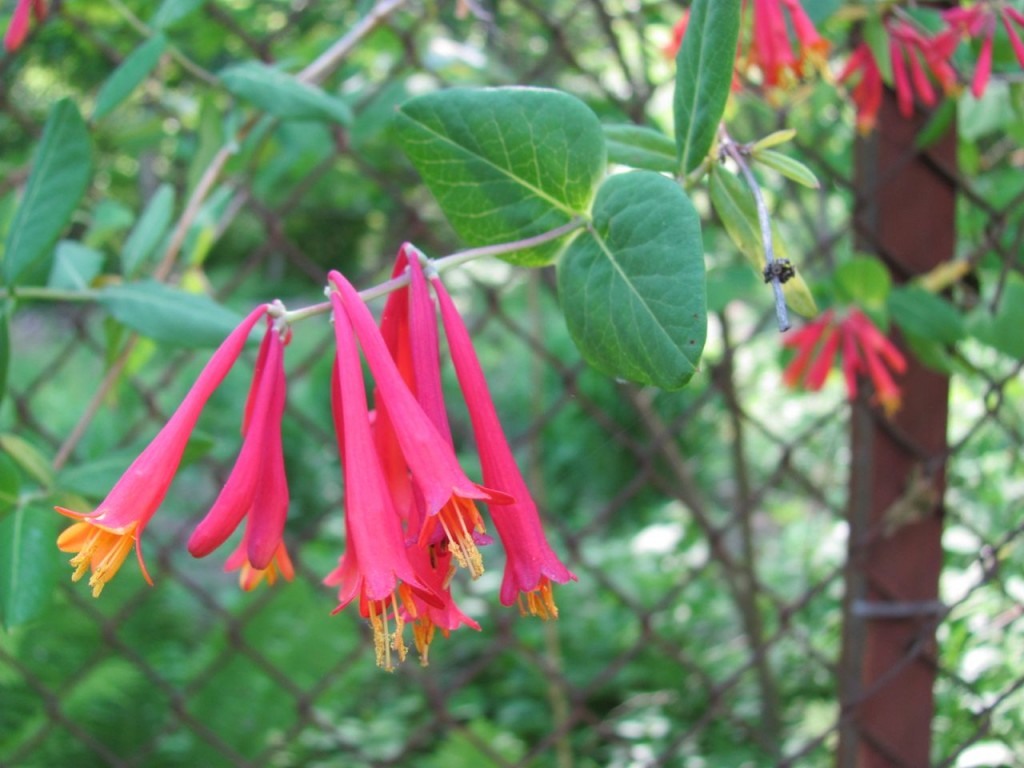
Above, the Coral Honeysuckle, the Lonicera sempervirens, blooming away. Â This is an indigenous vine which is very useful for attracting Hummingbirds. It will cover your fence or arbor and bloom away for months on end, transcending the seasonal changes. This plant is our main Hummingbird attraction. We do not have a Hummingbird feeder, so we rely on a variety of other plants as well, especially as Spring transitions into Summer.
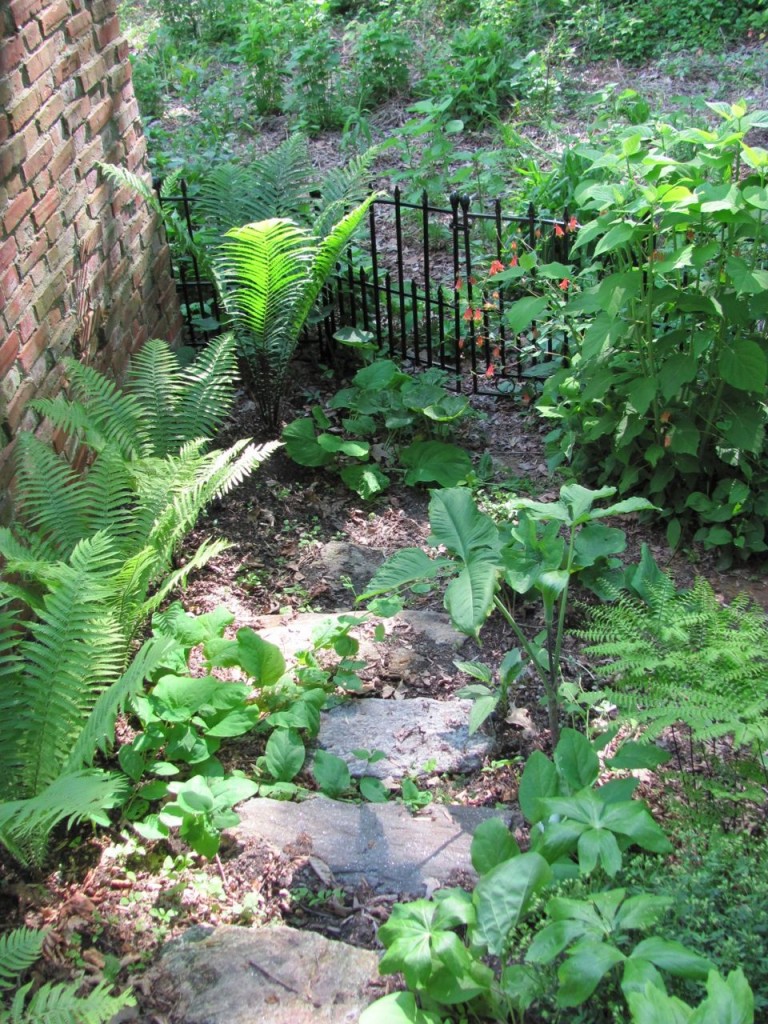
From left to right: Ostrich fern, Blooming Columbine (also a hummingbird plant), Jack -in-the-Pulpit, Maidenhair Fern and Mayapples on the right hand foreground.
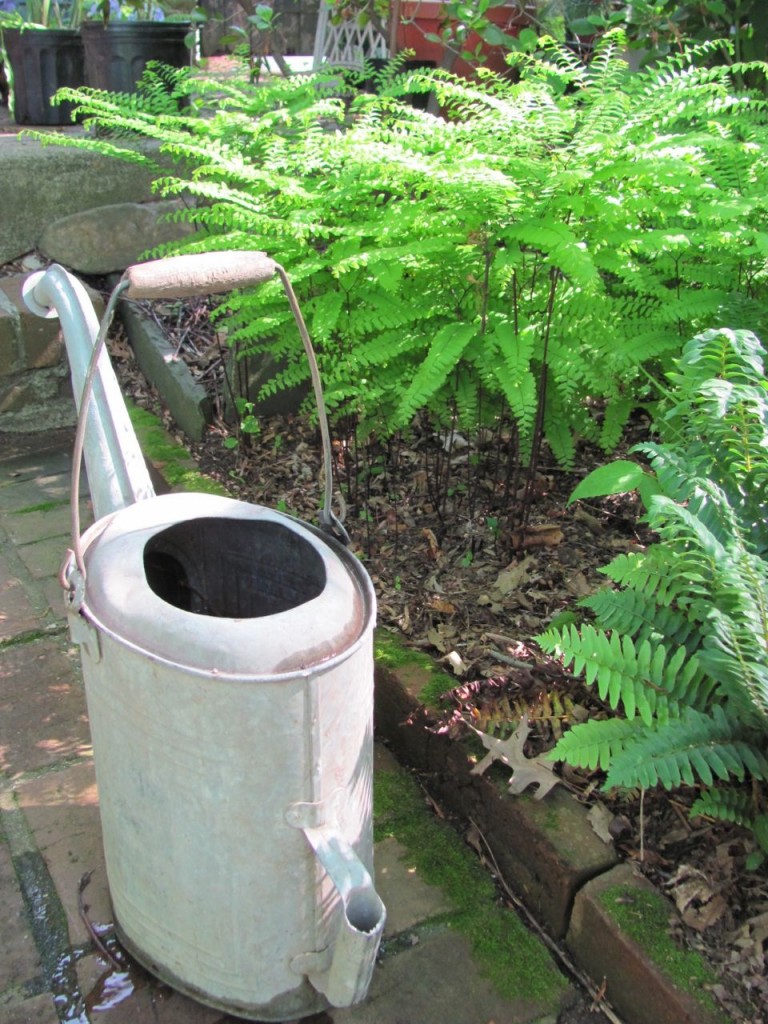
Above, The Maidenhair fern grows very well in the rowhouse urban garden. It likes the protection of cliffs. This watering can got very little use this Spring 2013, except for whatever plants were transplanted or nursery purchased, such as a bunch of Cardinal Flower we bought for the Hummingbirds.
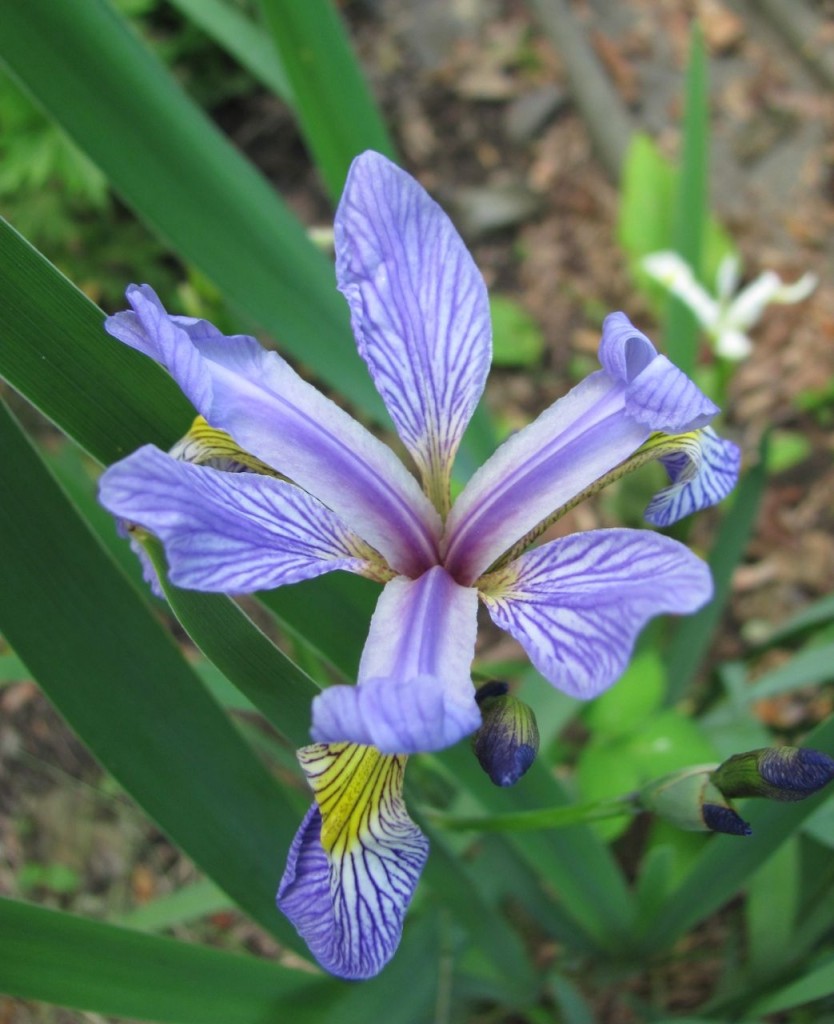
The native Irises, we proudly display for you.
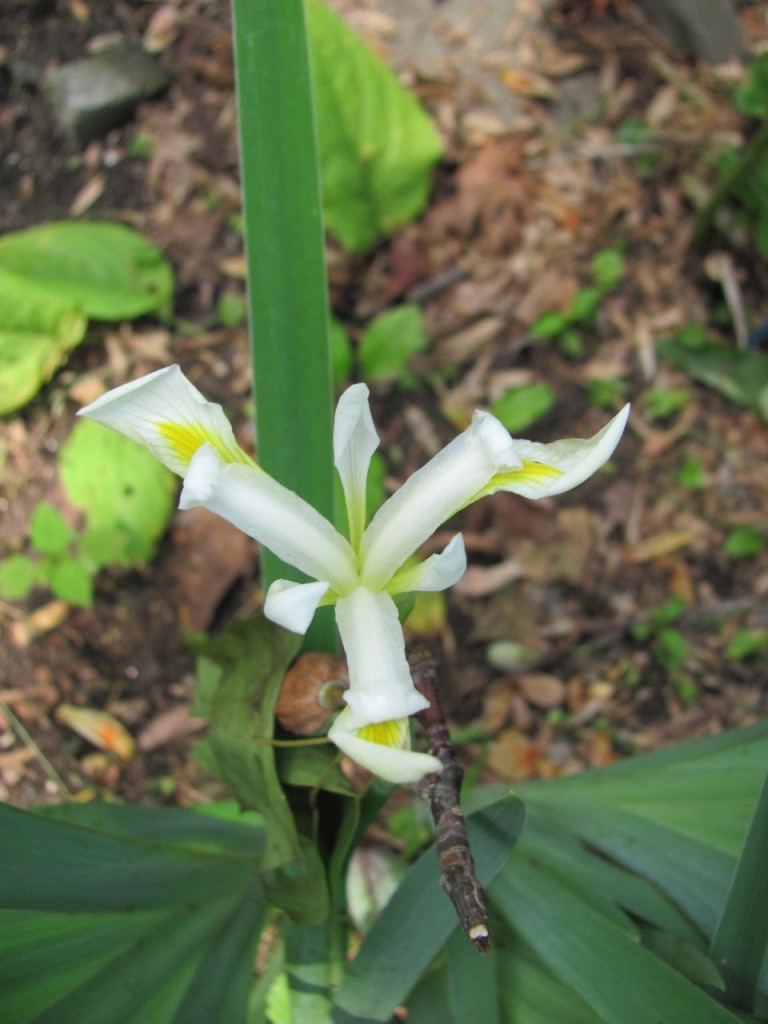
So, there you have it, Spring is now over with, at least for the most part. Perhaps we will see more bits of Spring-like behavior in the upcoming weather or plant and wildlife behavior as the days proceed beyond the Equinox.
Enjoy the transition!
